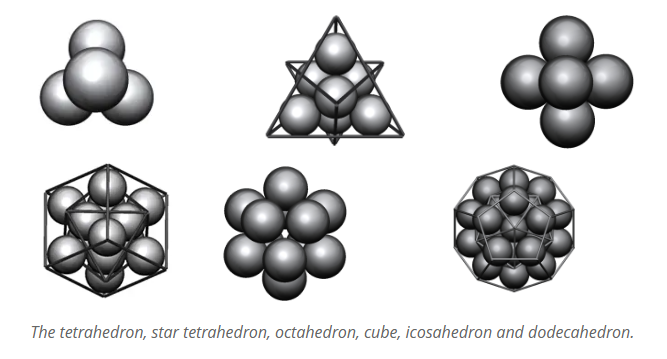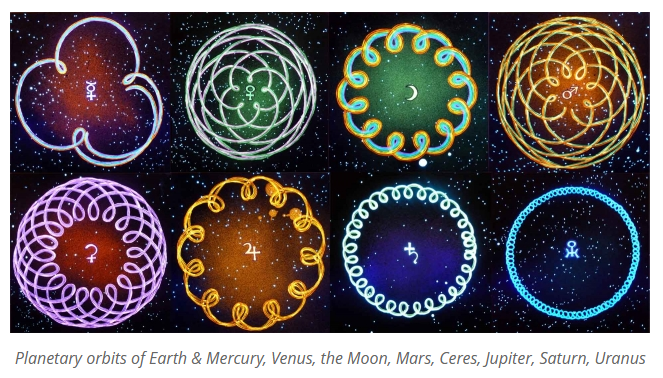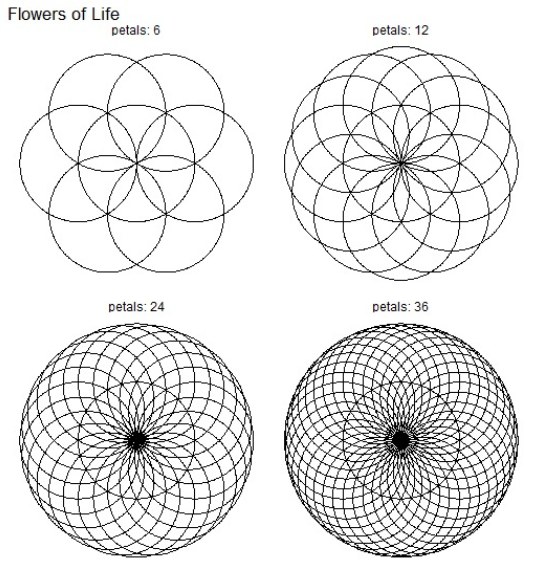“The Truth must be presented in such a way that it persuades without binding and appeals even without convincing… This may only be achieved through the language of the heart.”
Vicente Beltrán-Anglada
A String Metaphor
For a string that is “under-stretched” in the context of tuning a string instrument, a suitable single-word description could be “slack.” This term conveys the idea that the string lacks the necessary tension to achieve the correct pitch.
Conversely, for a string that is “over-stretched,” implying it has been tightened beyond the desired tension, an appropriate term would be “taut.” This word indicates that the string has been stretched tightly, potentially to the point of exceeding the optimal tension for correct tuning.
For the right tension of a string, which falls between the extremes of being “slack” and “taut,” a suitable term would be “tuned.” This term specifically indicates that the string has been adjusted to achieve the correct pitch and tension for optimal sound quality. Alternatively, we could also describe the string as being “in tune” to convey the same idea of achieving the desired musical pitch through proper tension.
Psychological Tuning
Drawing parallels between the tension states of a string (slack, tuned, and taut) and psychological states offers a fascinating way to explore human emotions or states of being in relation to balance and extremes.
- Psychological States:
- Slack: This could correspond to “sloth” or lethargy, where there’s a lack of energy or motivation, akin to the lack of tension in a slack string.
- Tuned: Corresponding to “alert,” this state represents a balanced, optimal state of readiness and engagement, much like a string that is perfectly tuned.
- Taut: This might be likened to “anxious,” where there’s an overabundance of tension or stress, similar to an over-stretched string.
- Emotional States:
- Slack: Apathy, characterized by a lack of interest, enthusiasm, or concern.
- Tuned: Contentment, representing a state of happiness and satisfaction.
- Taut: Anxiety, marked by excessive worry, nervousness, or unease.
- Physical States:
- Slack: Rest, where the body is in a state of relaxation and recovery.
- Tuned: Activity, where the body is engaged in action, well-balanced and energized.
- Taut: Strain, where the body is under excessive stress, potentially leading to injury or fatigue.
Each of these triplicities reflects a spectrum from deficiency to excess, with a balanced, optimal point in the middle. These analogies can help illustrate the importance of finding balance in various aspects of life and the consequences of veering too far towards either extreme.
Serene Expectancy
In the metaphorical range concerning the tension of a string—spanning from “slack” through “tuned” to “taut”—the term “serene expectancy” would most closely align with the “tuned” state.
- Slack: Represents a lack of tension, akin to lethargy or disengagement. It does not convey the active, positive anticipation implied by “serene expectancy.”
- Tuned: This is the optimal state of tension for a string, where it produces the desired pitch when struck or plucked. It symbolizes balance, readiness, and the potential to resonate beautifully. “Serene expectancy” embodies this equilibrium between calmness (serenity) and anticipation (expectancy), reflecting a state of peaceful readiness and balanced stance.
- Taut: Indicates excessive tension, paralleling states of anxiety or strain. This contrasts with the tranquility suggested by “serene,” making it less compatible with the concept of “serene expectancy.”
Therefore, “serene expectancy” fits best within the “tuned” category, encapsulating a harmonious blend of peace and hopeful anticipation. It suggests being in a state of readiness for what is to come, perfectly balanced and resonating with potential, much like a well-tuned string that is ready to play its part in a larger symphony.
Profound Attentiveness
In the context of the string metaphor, where “serene expectancy” corresponds to a “tuned string,” representing a state of balanced readiness and peaceful anticipation, “profound attentiveness” can be seen as a complementary aspect that enriches and refines this state.
To relate “profound attentiveness” to “serene expectancy”:
- Enhancing Resonance: Just as a tuned string is ready to resonate with its optimal sound, “profound attentiveness” can be seen as the focused engagement that brings out the full richness and depth of this potential. It implies a heightened awareness and deep listening that can enhance the quality of the resonance, much like how a musician’s focused attention can draw out the most expressive and nuanced performance from a well-tuned instrument.
- Dynamic Interaction: In the dynamic act of playing a stringed instrument, “serene expectancy” could represent the poised readiness before the string is plucked or bowed, while “profound attentiveness” represents the active, engaged process of creating music. This attentiveness adjusts in real-time to maintain the harmony and balance of the sound, akin to the musician’s continuous adjustment to keep the instrument in tune and the music expressive.
- Harmony and Depth: While “serene expectancy” provides a foundational state of equilibrium and openness, “profound attentiveness” adds depth and intentionality to this state. It’s the difference between merely being in tune and actively engaging with the moment to create something beautiful and meaningful. This attentiveness ensures that the serenity is not passive but is charged with purpose and depth.
- Feedback Loop: In a practical sense, “profound attentiveness” also serves as a feedback mechanism that ensures the “tuned” state of “serene expectancy” is maintained. It involves being attuned to subtle shifts and making necessary adjustments, much like how a musician listens closely to the sound produced and fine-tunes the strings as needed to keep them at their optimal pitch.
In summary, “profound attentiveness” complements “serene expectancy” by adding depth, engagement, and a dynamic quality to the foundational state of balance and readiness represented by a tuned string. Together, they embody a holistic approach to readiness—not just being passively prepared but actively engaging with and responding to the moment with depth, intention, and sensitivity.
Perfect Adaptability
In the context of the string metaphor, where “serene expectancy” corresponds to a tuned string (representing balanced readiness and peaceful anticipation) and “profound attentiveness” enhances this state with focused engagement and depth, “perfect adaptability” (or resilience) can be seen as the capability of the string to maintain its optimal state through changes and challenges.
Here’s how “perfect adaptability” relates to both “serene expectancy” and “profound attentiveness”:
- Maintaining Harmony Amidst Change: “Perfect adaptability” embodies the string’s resilience, its ability to return to its tuned state (serene expectancy) after being plucked, struck, or otherwise engaged (an action requiring profound attentiveness). It reflects the resilience needed to face changes and stresses without losing balance or harmony, always returning to a state of readiness and potential.
- Dynamic Equilibrium: In the act of making music, strings must be flexible enough to vibrate and produce sound, yet strong enough to not break under tension. This dynamic equilibrium is akin to “perfect adaptability,” where the string’s resilience allows it to oscillate between action (engagement, as in profound attentiveness) and rest (readiness, as in serene expectancy), always capable of producing the desired sound.
- Responsive Adjustment: Just as a musician adjusts the tension of the strings to keep them in tune, responding to environmental factors like humidity or temperature, “perfect adaptability” represents the ongoing, responsive process that supports “serene expectancy.” It is the active aspect of resilience that ensures the state of balanced readiness is maintained despite external pressures. This adjustment requires “profound attentiveness” to subtle cues that indicate when change is needed.
- Synergy in Action: “Perfect adaptability” is what allows the string (and by extension, the individual or system it represents) to navigate the complexities of existence—balancing the serenity of expectancy with the depth of attentiveness. It ensures that the string can withstand the pressures of being played, contributing to the music without losing its integrity or balance. It is the underlying strength that enables the maintenance of “serene expectancy” through “profound attentiveness.”
In essence, “perfect adaptability” (resilience) is the quality that binds “serene expectancy” and “profound attentiveness” together, allowing for a harmonious interplay between being peacefully prepared for what may come and engaging deeply with the present moment. It’s the capacity to remain tuned and resonant, adapting fluidly to the demands of performance and environment, ensuring that the music—literal or metaphorical—continues to flow beautifully and meaningfully.
The Practice of the Presence: the Spiritual Melody
Incorporating the spiritual concept of the “Practice of the Presence” into the string metaphor, alongside “serene expectancy,” “profound attentiveness,” and “perfect adaptability” (resilience), offers a rich and multidimensional perspective on how these elements interact and support one another in a harmonious, spiritual journey.
- Foundation in “Serene Expectancy”: The “Practice of the Presence” begins with a foundation akin to “serene expectancy.” This is the state of being open, ready, and peacefully expectant for the divine presence at all times. Just as a tuned string holds potential for music, serene expectancy in spiritual practice holds space for divine interaction, setting the stage for a deeper connection and awareness.
- Deepened by “Profound Attentiveness”: The “Practice of the Presence” is deepened through “profound attentiveness,” where the focus and engagement are on the present moment and the continuous acknowledgment of the divine presence in it. This attentiveness is not passive but an active, deep listening and watching for signs of the divine in everyday life—akin to how a musician listens to and engages deeply with the sound produced by a string, ensuring it expresses the intended harmony and emotion.
- Sustained by “Perfect Adaptability”: The resilience or “perfect adaptability” represents the capacity to maintain this spiritual practice through the ups and downs of life. It’s about returning to a state of serene expectancy and profound attentiveness even when faced with distractions, challenges, or periods of spiritual dryness. This adaptability ensures that the practice of presence remains consistent, much like how a string’s ability to return to its tuned state after being played allows for continued musical expression.
- The Practice of the Presence as the Harmonizing Force: In this metaphor, the “Practice of the Presence” can be seen as the harmonizing force that integrates serene expectancy, profound attentiveness, and perfect adaptability. It is the overarching spiritual discipline that informs and transforms each aspect, making the experience of playing the string (living life) not just an act of producing sound (going through motions) but a profound expression of divine communion and creativity.
The “Practice of the Presence” thus becomes the spiritual melody played on the metaphorical strings of serene expectancy, profound attentiveness, and perfect adaptability. Each string vibrates with the touch of the divine, each note resonates with the depth of spiritual connection, and the music that emerges is a continuous, living testament to the presence of the divine in every moment of existence. This practice elevates the act of living to an art form, where every moment is an opportunity for spiritual engagement and expression.
Mindfulness
Drawing parallels between the practice of the presence (a spiritual discipline focusing on continuous awareness of the divine presence) and the practice of mindfulness (a mental state achieved by focusing one’s awareness on the present moment) in the context of our string metaphor—where serene expectancy, profound attentiveness, and perfect adaptability represent different aspects of a well-tuned string—reveals a rich tapestry of interconnectedness and harmony.
- Serene Expectancy as the Foundation: Mindfulness, like the practice of the presence, begins with an openness to the present moment. This state resembles serene expectancy, where there is a readiness and peaceful anticipation for what the present holds. Mindfulness encourages individuals to set aside time to observe the present moment as it is, without judgment, mirroring the state of being open and ready for divine interaction in the practice of the presence (Mindful.org).
- Profound Attentiveness as Engagement: The core of mindfulness involves observing thoughts, emotions, and sensations without reacting to fix them, akin to profound attentiveness. This deep engagement with the present moment allows individuals to recognize the sacred in the ordinary, paralleling how profound attentiveness in the practice of the presence seeks signs of the divine in everyday life. Mindfulness exercises, such as mindful meditation, emphasize focusing on breathing, thoughts, or sensations, fostering an active, engaged process similar to the attentiveness required in spiritual practices (Mind.org.uk; PositivePsychology.com).
- Perfect Adaptability as Resilience: Mindfulness enhances one’s ability to adapt to changing circumstances with resilience, mirroring the concept of perfect adaptability. It teaches the mind to settle into the present moment, regardless of external pressures or distractions, much like how resilience in the practice of the presence enables individuals to maintain their spiritual discipline through life’s ups and downs. Mindfulness benefits mental health by helping individuals stay focused on the present, feel calmer, and more relaxed, demonstrating how adaptability fosters a continuous, living testament to the presence—divine or otherwise—in every moment (Healthline.com; Health.ClevelandClinic.org).
- Harmonizing Force of Continuous Awareness: Both mindfulness and the practice of the presence serve as harmonizing forces, integrating serene expectancy, profound attentiveness, and perfect adaptability. They elevate the act of living to an art form, where every moment is an opportunity for engagement, expression, and transformation. By focusing attention on the present moment and accepting it without judgment, mindfulness mirrors the continuous acknowledgment of the divine in the practice of the presence, ensuring that the music of life—played on the metaphorical strings—is a profound expression of connection and creativity (HelpGuide.org; Harvard.edu Gazette).
In essence, the practice of the presence and the practice of mindfulness can be seen as two melodies played on the same instrument, each enhancing the other. They both foster a state of balanced readiness, deep engagement with the present, and the resilience to maintain this harmony through life’s fluctuations. Through these practices, the metaphorical strings of our lives can resonate with a deeper, more meaningful sound, reflecting a continuous, harmonious interplay between the human and the divine, the temporal and the eternal.
Counterpoint: the Music of the Spheres
Indeed, the phrase “the practice of the presence and the practice of mindfulness can be seen as two melodies played on the same instrument, each enhancing the other” can be understood in the context of counterpoint, as it is musically defined. Counterpoint is a compositional technique in music that involves the interplay of independent melodic lines that, while distinct, are harmonically interdependent and work together to create a richer, more complex musical texture.
In this metaphorical sense:
- Independent Yet Interrelated: Just as in counterpoint, where each melody maintains its distinct identity but is designed to harmonize with the others, the practice of the presence and the practice of mindfulness are independent disciplines that share a common goal of enhancing awareness and connection. Each “melody” (practice) follows its own path—spiritual awareness for the practice of the presence, and present moment awareness for mindfulness—but they intersect in their aim to deepen the individual’s engagement with the present and the profound.
- Harmonious Enhancement: The interaction between the practice of the presence and mindfulness is not merely additive but synergistic. Like counterpoint, where the combination of melodies creates a richer musical experience than any single melody could alone, these practices together enrich the individual’s spiritual and emotional landscape more than either could in isolation. They provide a multi-layered approach to understanding and experiencing the world, leading to a deeper sense of harmony and balance.
- Dynamic Interplay: In counterpoint, the beauty often lies in the dynamic interplay between the melodies—their contrasts, convergences, and the way they highlight different aspects of the musical theme. Similarly, the dynamic interplay between the practice of the presence and mindfulness illuminates different facets of awareness and presence, offering a fuller, more nuanced exploration of one’s inner life and the external world.
- Complexity and Depth: Just as counterpoint adds complexity and depth to a piece of music, allowing for a more engaging and profound listening experience, the combined practice of the presence and mindfulness adds depth to the practitioner’s experience of life. This complexity fosters a more engaged, reflective, and enriched way of living, where every moment holds the potential for deep connection and insight.
In summary, viewing the relationship between the practice of the presence and mindfulness through the lens of counterpoint provides a rich metaphorical framework for understanding how these practices complement and enhance each other, creating a harmonious and enriched experience of awareness and connection in the practitioner’s life.
Addendum extracted from: Article 102A: Physics – Aether Units – Part 6 – The Torus & Nassim Haramein – Cosmic Core (cosmic-core.org)
The Music of the Spheres: a Bridge to the Infinite
What we have described is the Vacuum (Aether) being composed of Field Bubbles (Aether Units). These field bubbles are close-packed spheres that go out in all directions. Each sphere is a central harmonic oscillator at its center. The oscillation created is a result of the flow of Aether.


Each sphere contains all the Platonic solid geometry, Archimedean geometry and all associated stellations, truncations and compounds in potentiation.
The geometry is fractal, recursive and holographic. This means the geometry is within geometry, within geometry, within geometry, outwards and inwards, infinitely.
This is how the “fractal, recursive and holographic” instrument of the mindful musician is built — in serene expectancy, in profound attentiveness , and with perfect adaptability —to play the music of the spheres, a veritable bridge to infinity. -JB




